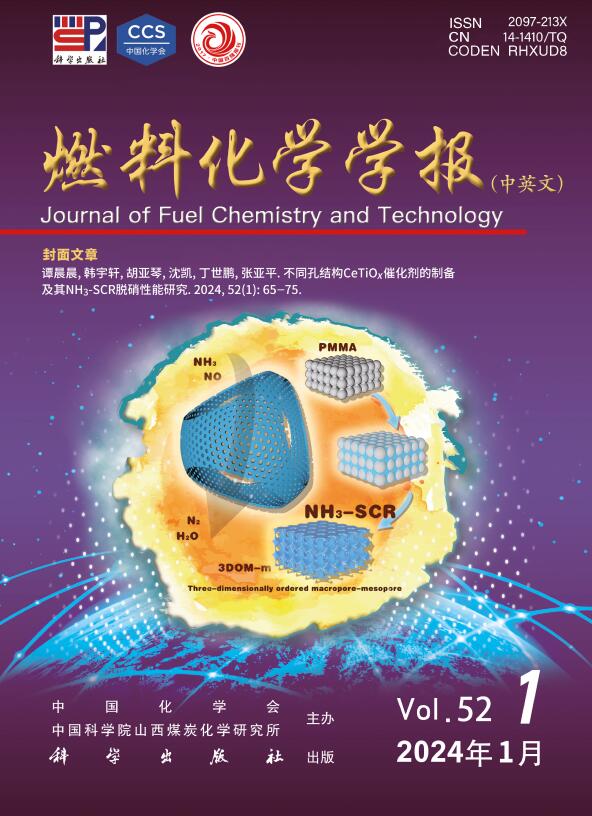Comparative study on the structural properties and electrochemical performance of xylan-derived char catalyzed by Na2CO3 at various concentrations
Q3 Energy
引用次数: 0
Abstract
In this study, the catalysis function of Na2CO3 to the structural properties of xylan char was well investigated with Na2CO3 on, and the electrochemical performance of xylan char as an anode material for sodium-ion batteries was tested. The characterization of X-ray microscopy and scanning electron microscopy demonstrated that the morphological structure of xylan char was altered due to the addition of Na2CO3 catalyst. The increasement of the Na2CO3/xylan ratio resulted in a slenderization of the triangular prism shape of the char skeleton and a reduction in porosity. X-ray diffraction analysis revealed that Na2CO3 promoted the growth of the (004) crystal plane of graphite during xylan pyrolysis, while inhibiting the formation of the (100/101) crystal planes. Raman spectroscopy analysis indicated that the presence of Na2CO3 had changed the graphitization degree of xylan char. Electrochemical tests further showed that char prepared with a Na2CO3/xylan mass ratio of 1∶1 exhibited the highest sodium storage capacity. This study provides a pathway for the rational design carbon materials derived from xylan for future applications in energy storage devices.
不同浓度Na2CO3催化木聚糖衍生炭的结构性质和电化学性能比较研究
研究了Na2CO3对木聚糖炭结构性能的催化作用,并测试了木聚糖炭作为钠离子电池负极材料的电化学性能。x射线显微镜和扫描电镜表征表明,Na2CO3催化剂的加入改变了木聚糖焦的形态结构。Na2CO3/木聚糖比的增加使焦炭骨架呈棱柱状,孔隙率降低。x射线衍射分析表明,在木聚糖热解过程中,Na2CO3促进了石墨(004)晶面的生长,抑制了(100/101)晶面的形成。拉曼光谱分析表明,Na2CO3的存在改变了木聚糖炭的石墨化程度。电化学测试进一步表明,Na2CO3/木聚糖质量比为1∶1时制备的炭具有最高的储钠容量。本研究为木聚糖衍生碳材料的合理设计以及未来在储能器件中的应用提供了一条途径。
本文章由计算机程序翻译,如有差异,请以英文原文为准。
求助全文
约1分钟内获得全文
求助全文
来源期刊

燃料化学学报
Chemical Engineering-Chemical Engineering (all)
CiteScore
2.80
自引率
0.00%
发文量
5825
期刊介绍:
Journal of Fuel Chemistry and Technology (Ranliao Huaxue Xuebao) is a Chinese Academy of Sciences(CAS) journal started in 1956, sponsored by the Chinese Chemical Society and the Institute of Coal Chemistry, Chinese Academy of Sciences(CAS). The journal is published bimonthly by Science Press in China and widely distributed in about 20 countries. Journal of Fuel Chemistry and Technology publishes reports of both basic and applied research in the chemistry and chemical engineering of many energy sources, including that involved in the nature, processing and utilization of coal, petroleum, oil shale, natural gas, biomass and synfuels, as well as related subjects of increasing interest such as C1 chemistry, pollutions control and new catalytic materials. Types of publications include original research articles, short communications, research notes and reviews. Both domestic and international contributors are welcome. Manuscripts written in Chinese or English will be accepted. Additional English titles, abstracts and key words should be included in Chinese manuscripts. All manuscripts are subject to critical review by the editorial committee, which is composed of about 10 foreign and 50 Chinese experts in fuel science. Journal of Fuel Chemistry and Technology has been a source of primary research work in fuel chemistry as a Chinese core scientific periodical.
 求助内容:
求助内容: 应助结果提醒方式:
应助结果提醒方式:


